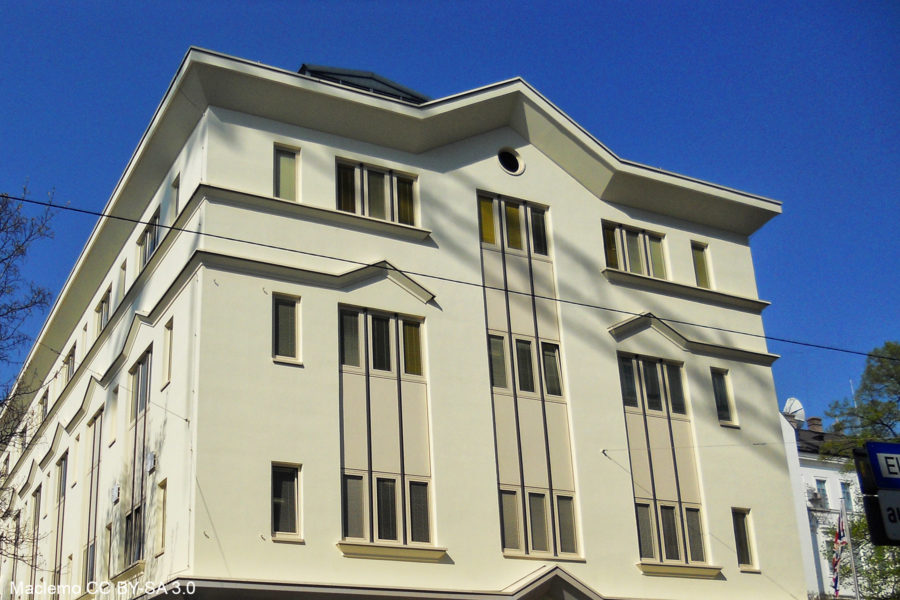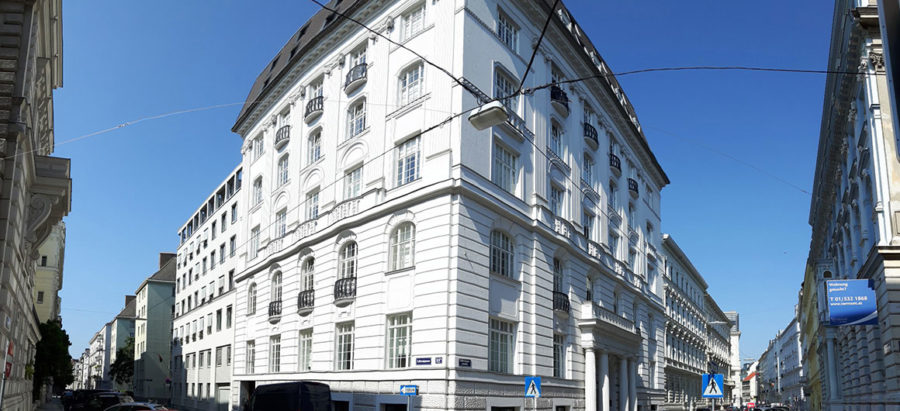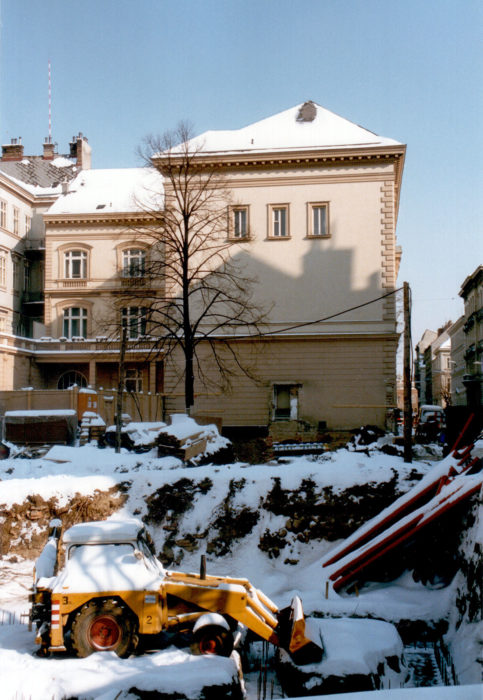Ambassador to Austria and UK Permanent Representative to the United Nations and other International Organisations in Vienna
Part of UK in Austria
27th May 2020 Vienna, Austria
How “The adjoining house at the Lustig Prean Gasse” became the British Embassy 
“The Ministry of Works may have ideas about office accommodation. I doubt whether it would be possible to extend the existing offices by building in the courtyard. Failing this, it might be possible to secure the adjoining house in the Lustig Prean Gasse (No.10), which is now divided into flats and which would be sufficiently large to accommodate all the services and the Consulate.”
We have recently published two blogs about our estate in Vienna. One considers how repeated changes in the name of the street on which the British Embassy is located, the Jaurésgasse, reflect Austria’s 20th Century history. A second explores how the historic 1875 residence was recovered from the National Socialist Flying Corps, to whom it had been sold after the Anschluss in 1938, and restored after 1945.
While researching those blogs over Christmas 2019 I was struck by the above reference to Lustig Prean Gasse – an earlier name of the Jaurésgasse – in a letter of 23 February 1945 from Henry Mack of the “Allied Commission for Austria (British Element)”. Mack later became British ambassador to Austria. Despite Mack’s suggestion to accommodate the embassy on what is now the Jaurésgasse after the war, it was in fact located at Reisnerstrasse 40, nearby, from 1945. Only in 1989 was the present embassy opened – in exactly the location identified by Mack so many years before. How did this happen?

Papers show that when Allies arrived in Vienna in 1945, they discovered that the old embassy at Metternichgasse 6 was uninhabitable as the result of bomb damage. The block of flats identified by Mack behind the embassy had been destroyed, along with the servants’ wing of the old embassy. While debate continued about whether to buy back Metternichgasse 6, an interim residence was established at Metternichgasse 12, and the offices moved into Reisnerstrasse 40. As set out in our earlier blog, the residence at Metternichgasse 6 was subsequently bought back and, following restoration, reoccupied by Sir Harold Caccia in 1952.
At the same time as a decision was being taken on buying back the residence in 1950, the two sites at the corner of the Salesianergasse and the Jaurésgasse identified by Mack in 1945 had been cleared of bomb damage. In July 1950 a Ministry of Works architect, Sorotkin, visited Vienna and, in addition to recommending the re-purchase and repair of the former residence, recommended buying the Saliesianergasse sites “principally, to preserve the amenities of No.6 [Metternichgasse] and at the same time provide a garden for the Minister’s Residence”. On 26 October 1950, the United Kingdom bought both.
The first use to which the new space was put was, indeed, a garden. Correspondence dated 28 October 1950 from J.D.Fraser of the Ministry of Works in Lambeth Bridge House (where, 29 years later, I started work on my first day in the Department of the Environment – a successor to the Ministry of Works – on 3 October 1979) records discussions with the Ambassador’s wife, Lady Caccia, who expresses a range of clear views about the house at Metternichgasse 6 including that “a start should be made on reclaiming the garden now… although one cannot do much gardening in the winter there is a good deal of clearing which can be done… it should be possible to start straight away on levelling the ground and filling in craters, etc., with this year’s money.”
Meanwhile around the corner, the Reisnerstrasse offices were not much loved. As early as 1949 one E.C.Inston wrote that: “it is in my opinion essential that London should arrive at a decision as to the future of this building. We cannot hold onto it interminably under requisition… I suggest you press for an early decision.”

The former embassy building on Reisnerstrasse
When I arrived in Vienna as Second Secretary and Press Attache in 1984, the British Embassy was still in the Reisnerstrasse. But things were about to change.
On 7 March 1983, the Public Accounts Committee of the House of Commons (made up of Members of Parliament), had questioned the then Permanent Under Secretary of the Foreign and Commonwealth Office, Sir Anthony Acland. The PAC were critical of the fact that the Vienna residence and its garden were larger than was justified by Austria’s present importance. When the PUS observed that this was for historic reasons and that the building had been constructed in 1875, Mr John Maxton MP, a Scottish Labour Party politician (now Baron Maxton of Blackwaterfoot in Ayrshire) enquired: “Would you not agree that the Austro-Hungarian Empire disappeared in 1918?” To this, Sir Anthony could only reply, “Yes.”
A Mr A. Montague Alfred of the Property Services Agency, for which I had worked in Rheindahlen in Germany in 1980-81, was being questioned by the PAC alongside Sir Anthony. Montague sought to offer support to the PUS by observing that the PSA had recommended that the extra area “should be built upon for offices”.
Three years later, in 1986, construction work began on the new embassy at the corner of the Salesianergasse and the Jaurésgasse.
 The new Embassy offices under construction in the winter of 1986
The new Embassy offices under construction in the winter of 1986
Since the new offices opened in 1989, they have housed the bilateral embassy, the UK Delegation to the OSCE and the UK Mission to the UN and other International Organisations in Vienna. Given that I and other members of all three missions use the splendid residence building regularly for official functions, we have ended up with a superb arrangement comprising the residence, the new offices and a garden in-between, all within a few minutes’ walk of one another.
Henry Mack would have been delighted.
P.S. This is one of a series of blogs on the British diplomatic estate in Vienna. Read more about How the British residence in Vienna was rescued: 1945-1950, The Government Art Collection in Vienna, Bringing The Third Man home and the art of Edmund de Waal at the British Embassy in Vienna.














